Begonia Listada, a captivating member of the begonia family, is a botanical wonder that has captivated plant enthusiasts around the globe. This unique begonia species is renowned for its striking appearance and relatively easy care requirements, making it a popular choice for both novice and experienced gardeners alike.
Begonia Listada Origins and Background
Begonia Listada, scientifically classified under the Begoniaceae family, originates from the tropical regions of South America, particularly Brazil. Its name, “Listada,” is derived from the Latin word “listatus,” meaning striped – a nod to the distinctive striped patterns on its leaves.
With its mesmerizing foliage and remarkable adaptability, Begonia Listada has found its way into the hearts of plant lovers who appreciate its aesthetic appeal and versatility.
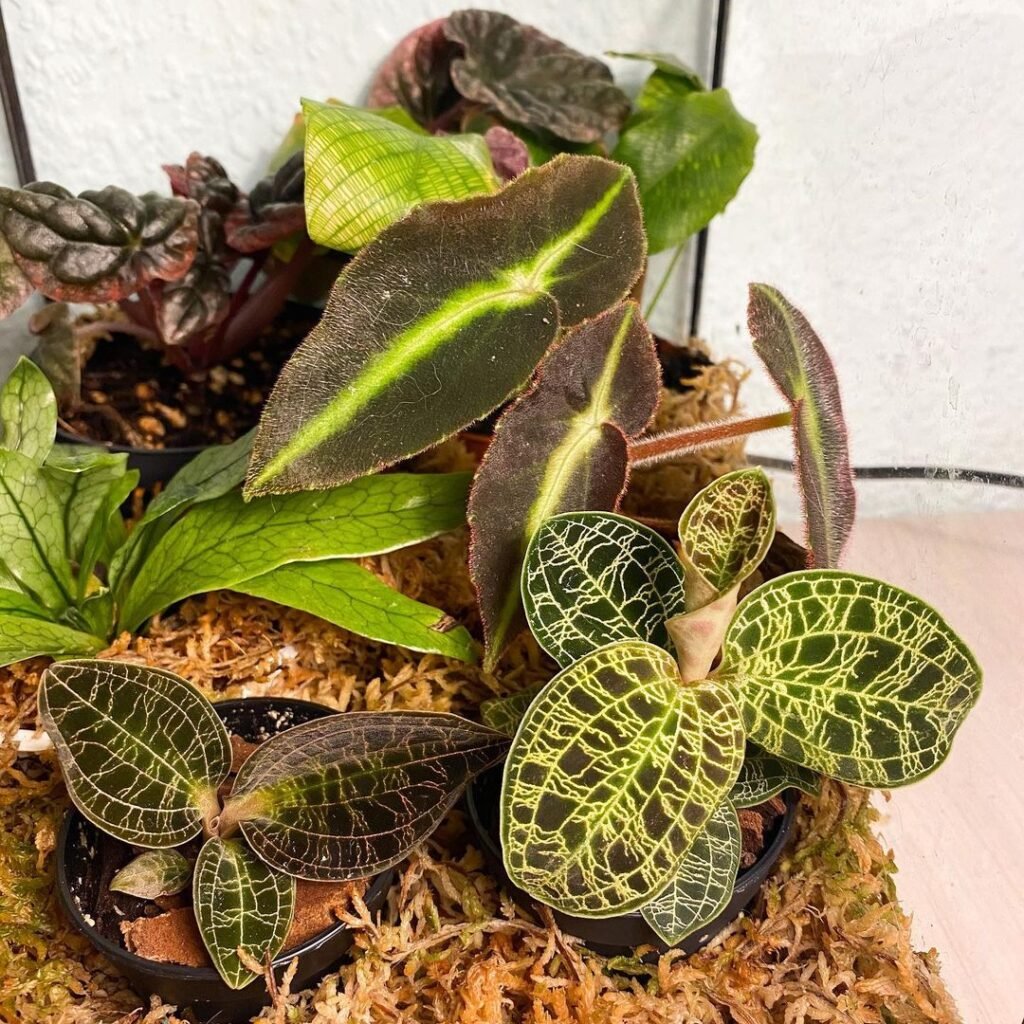
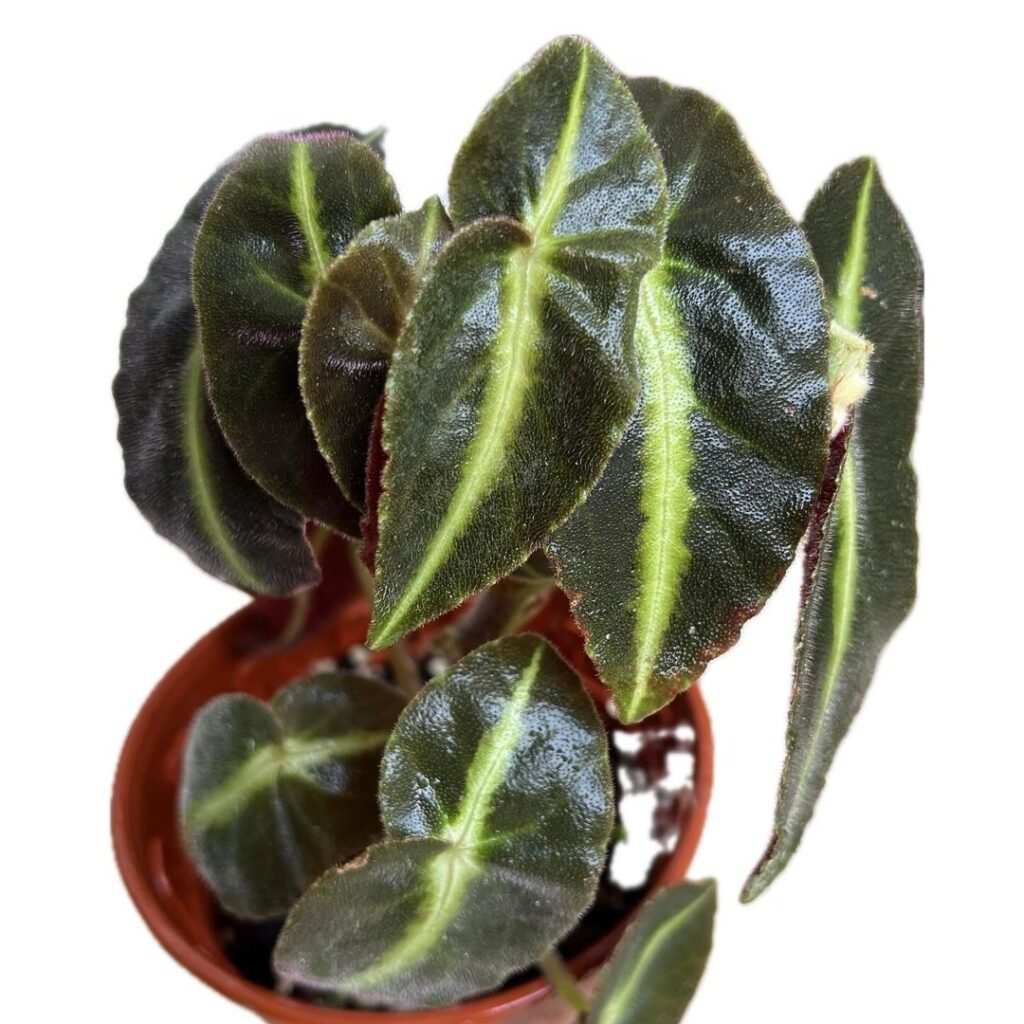
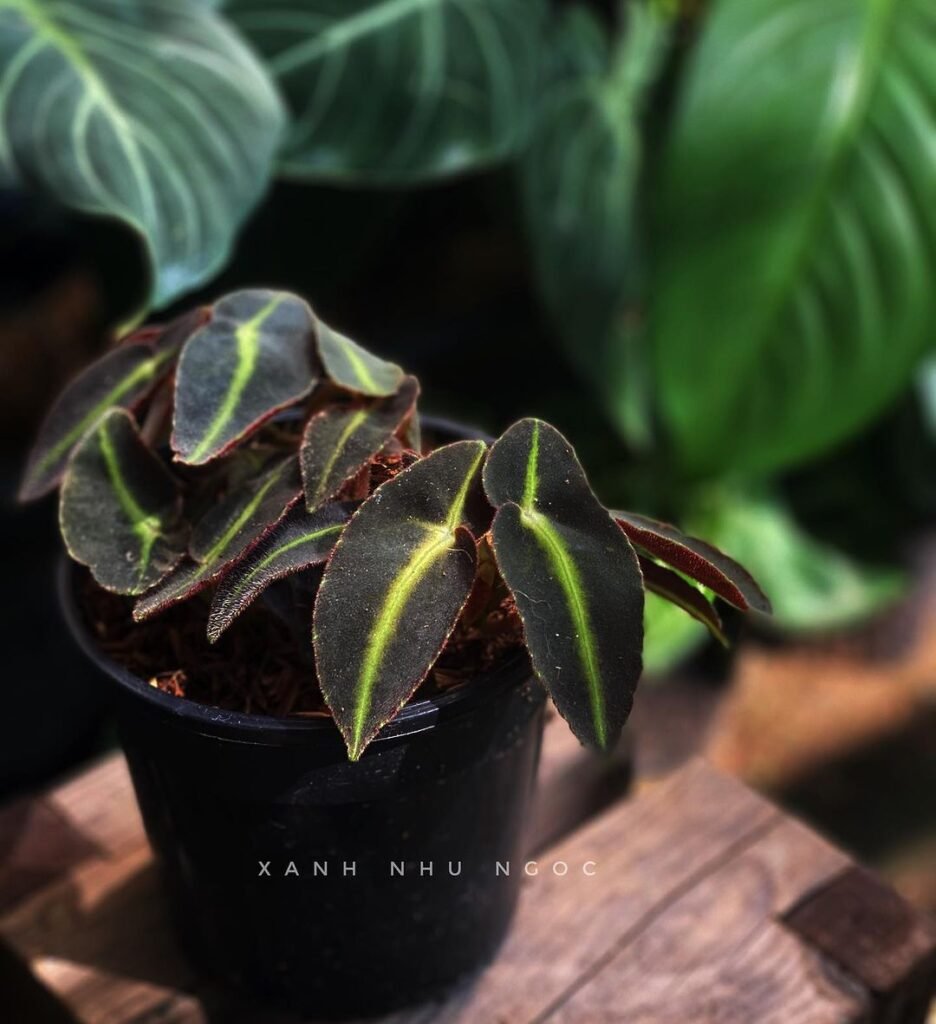
Genus Species
Understanding the broader context of Begonia Listada involves delving into its classification within the plant kingdom.
Begonia Genus Overview
Begonia, a diverse genus comprising over 1,800 species, belongs to the family Begoniaceae. Known for its wide range of shapes, sizes, and colors, the begonia genus includes both perennial and annual species. Begonias are commonly found in subtropical and tropical regions, displaying incredible diversity in their appearances and growth habits.
Begonia Listada Classification
Begonia Listada falls under the cane-like begonia category, characterized by its upright stems and cane-like growth pattern. Its scientific classification is as follows:
- Kingdom: Plantae
- Division: Angiosperms
- Class: Eudicots
- Order: Cucurbitales
- Family: Begoniaceae
- Genus: Begonia
- Species: Listada
This classification provides insights into Begonia Listada’s botanical relationships and helps enthusiasts appreciate its place in the vast world of begonias.
Begonia Listada Appearance
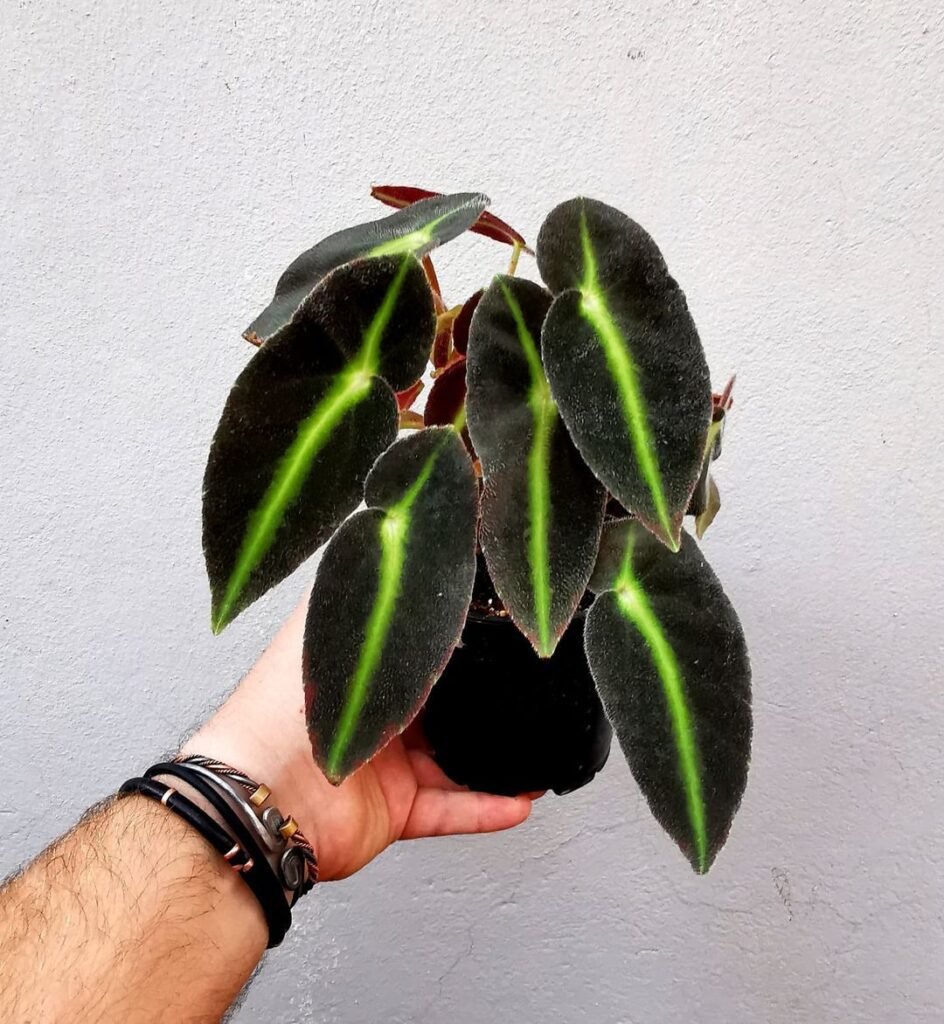
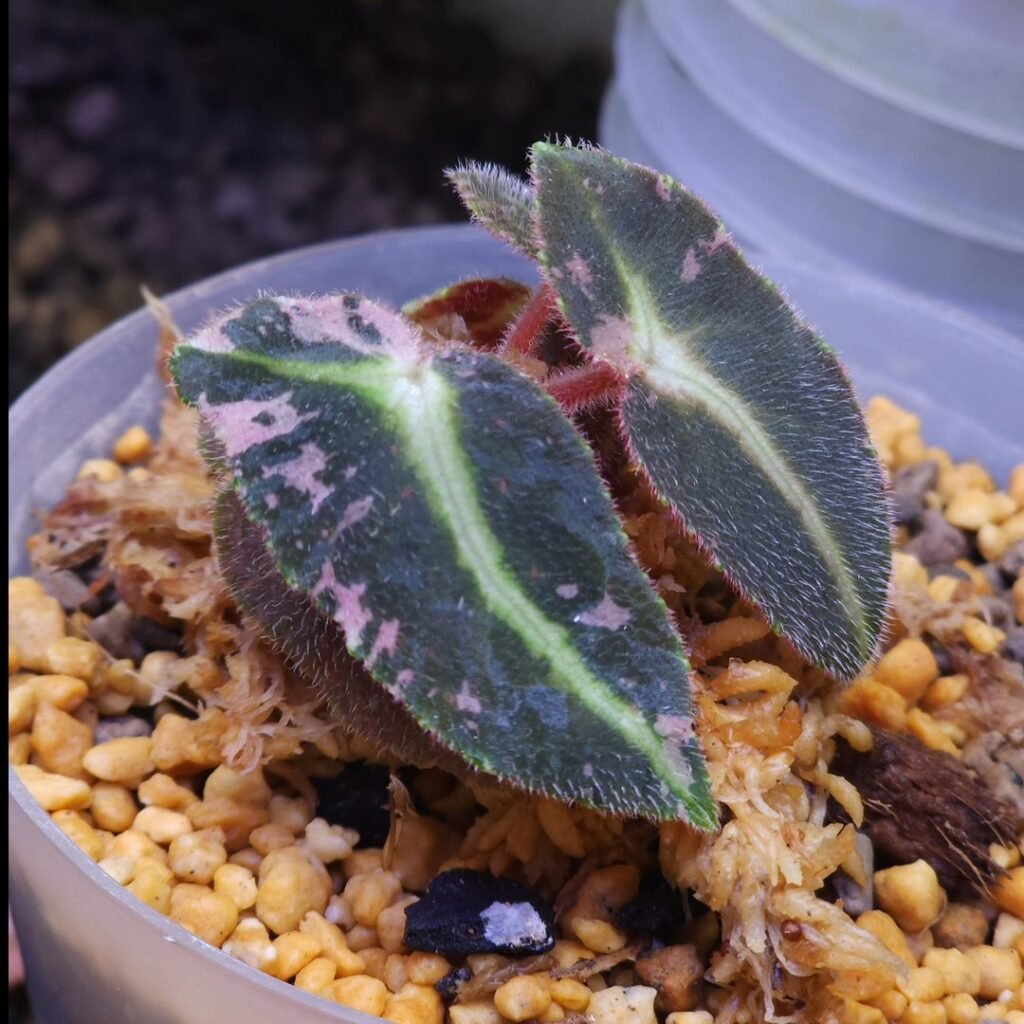
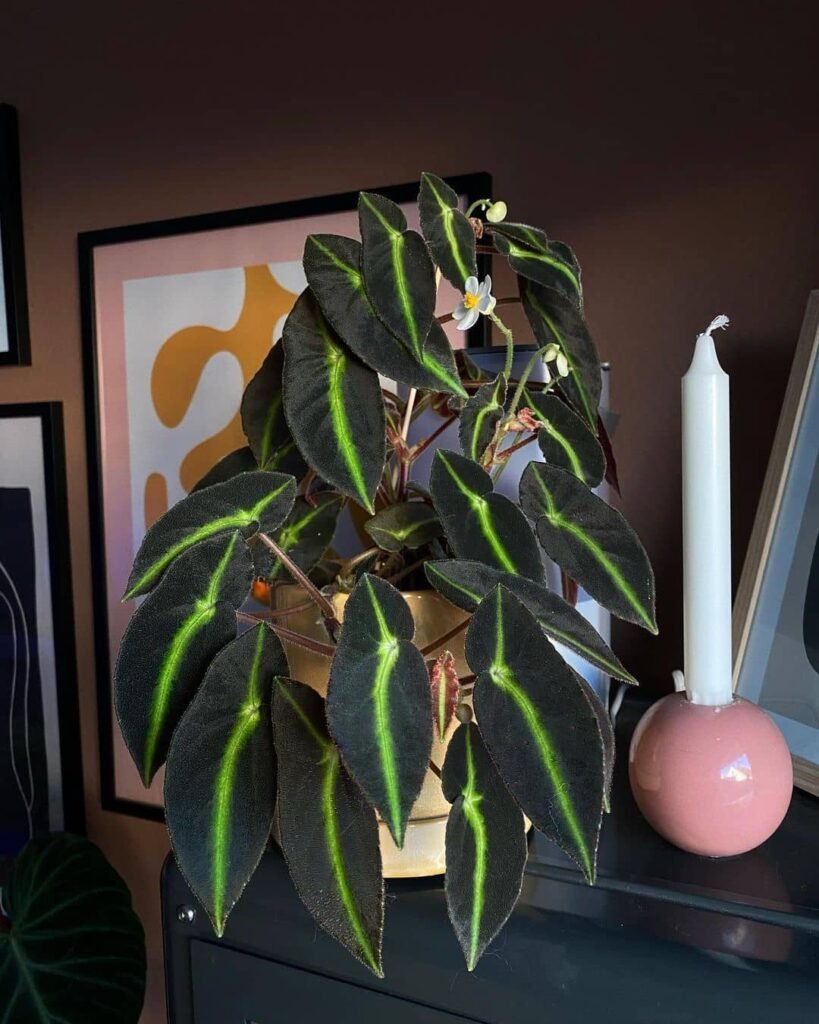
The allure of Begonia Listada lies in its distinct and eye-catching appearance, making it a standout addition to any plant collection.
Striking Foliage
Begonia Listada is recognized for its asymmetrical, obliquely shaped leaves adorned with vibrant, alternating green and silver stripes. The leaves can grow up to six inches in length, creating a lush and visually appealing display. The unique patterning adds a touch of elegance to indoor spaces or shaded outdoor gardens.
Growth Habit
This begonia species typically adopts an upright growth habit, with mature plants reaching heights of around 12 to 18 inches. The cane-like stems give the plant a graceful and architectural quality, making it an excellent choice for both standalone displays and mixed plant arrangements.
Seasonal Variations
During the growing season, Begonia Listada may produce delicate pink flowers that complement its striking foliage. While the flowers are a charming addition, the primary ornamental appeal lies in the plant’s leaves, making it a foliage-centric choice for botanical enthusiasts.
To enhance the visual impact of Begonia Listada, consider pairing it with complementary companion plants or arranging it in decorative containers. The juxtaposition of its unique foliage against other plants can create a visually captivating and harmonious display in your garden or indoor space.
Not the plant for you? Check out my full list of 78 Types of Begonia!
Begonia Listada Care Tips
Begonia Listada, while relatively resilient, thrives when provided with specific care tailored to its unique characteristics. Here’s a concise guide to keeping your Begonia Listada healthy and flourishing:
| Aspect of Care | Guidelines |
|---|---|
| Light Requirements | Place Begonia Listada in bright, indirect light. Avoid direct sunlight, as it can scorch the leaves. |
| Soil Type | Use well-draining, peat-based soil to promote a healthy root system. |
| Watering Frequency | Keep the soil consistently moist but not waterlogged. Allow the top inch of soil to dry out between watering sessions. |
| Humidity Levels | Maintain moderate to high humidity, mimicking the plant’s native tropical environment. |
| Temperature Range | Keep temperatures between 60°F to 75°F (15°C to 24°C). Protect from drafts and sudden temperature fluctuations. |
| Fertilizing Schedule | Feed with a balanced liquid fertilizer every 4-6 weeks during the growing season. |
| Pruning Needs | Trim leggy or damaged stems to encourage bushier growth. Remove dead or yellowing leaves regularly. |
| Propagation Tips | Propagate through stem cuttings in spring or early summer for best results. |
| Repotting Frequency | Repot young Begonia Listada plants annually to refresh the soil and provide more space for growth. |
By adhering to these care guidelines, you’ll create an environment that allows your Begonia Listada to thrive and showcase its stunning foliage.
Begonia Listada Light and Soil Requirements

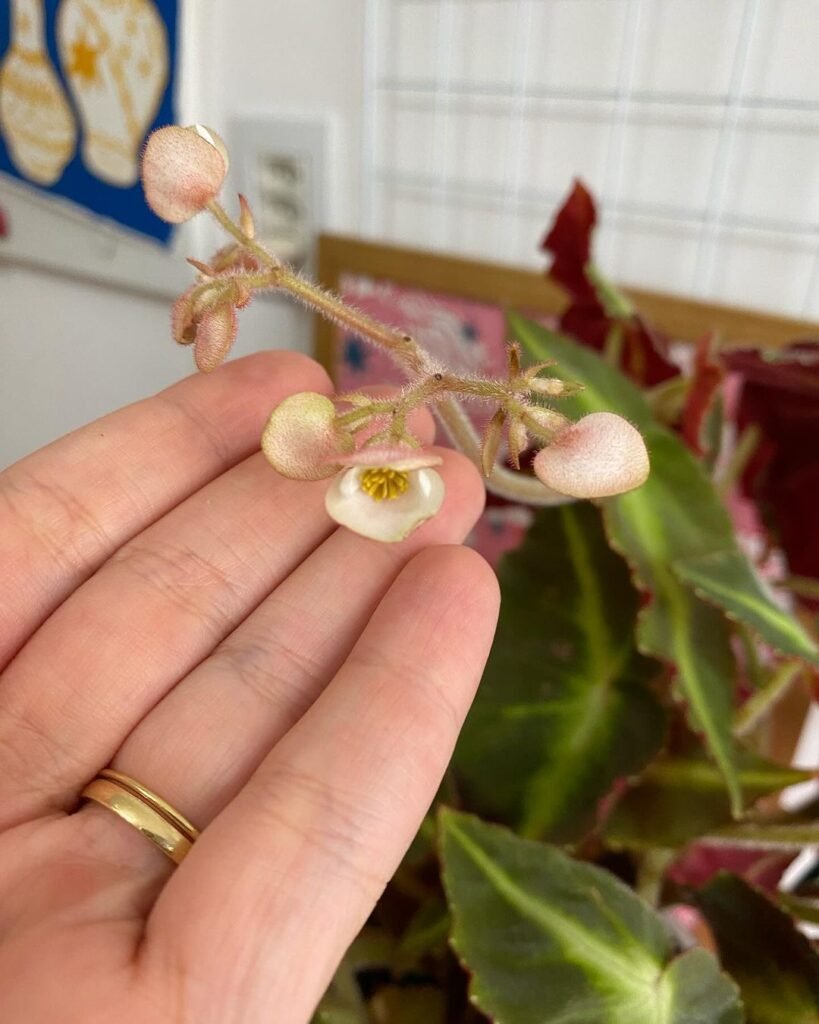
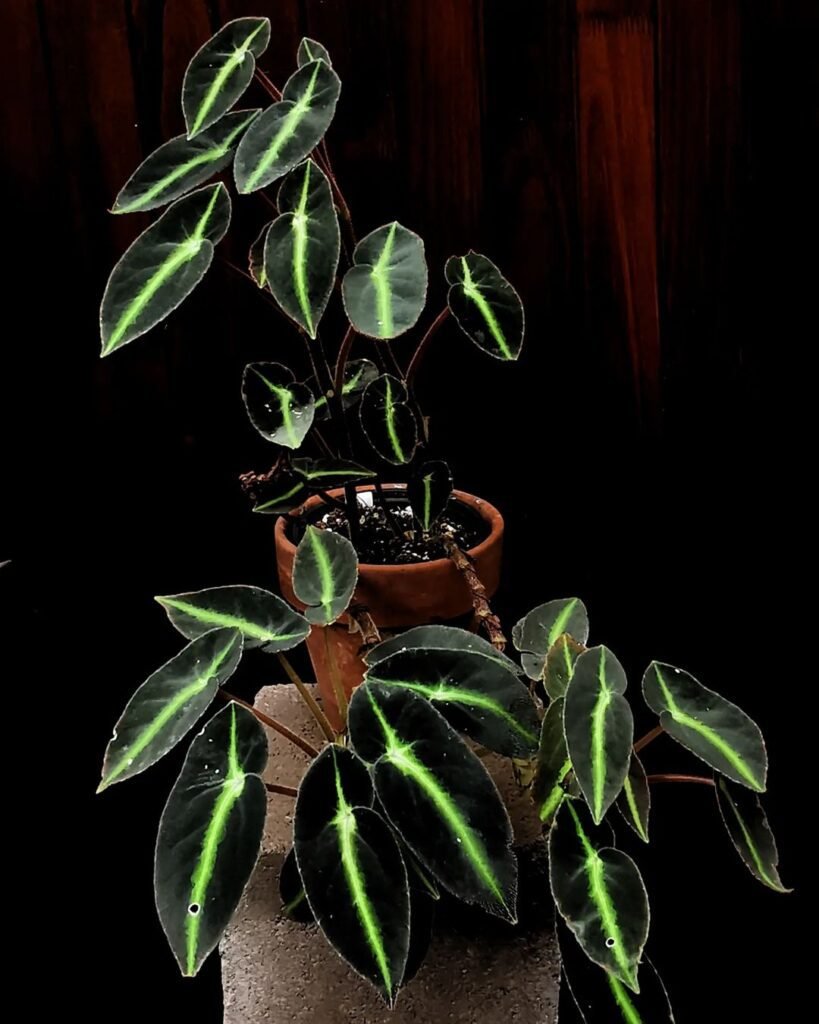
Ideal Lighting Conditions
Begonia Listada, native to the shaded regions of South America, thrives in bright, indirect light. While it can tolerate lower light levels, providing ample, filtered sunlight enhances the vibrancy of its striped foliage. Avoid direct sunlight, as it can lead to leaf scorching.
To determine suitable light conditions, observe the plant’s response. If the leaves appear leggy or the color fades, consider adjusting the light exposure. On the other hand, if the foliage becomes bleached or scorched, it may be receiving too much sunlight.
Well-Draining Soil Mix
Creating the right soil environment is crucial for Begonia Listada’s health. Opt for a well-draining, peat-based soil mix that allows excess water to escape, preventing root rot. A typical mix includes peat moss, perlite, and a small amount of organic matter.
When repotting or planting Begonia Listada, ensure the pot has drainage holes to facilitate proper water drainage. Periodically check the soil moisture levels, and adjust watering frequency based on the plant’s needs and environmental conditions.
Watering Begonia Listada
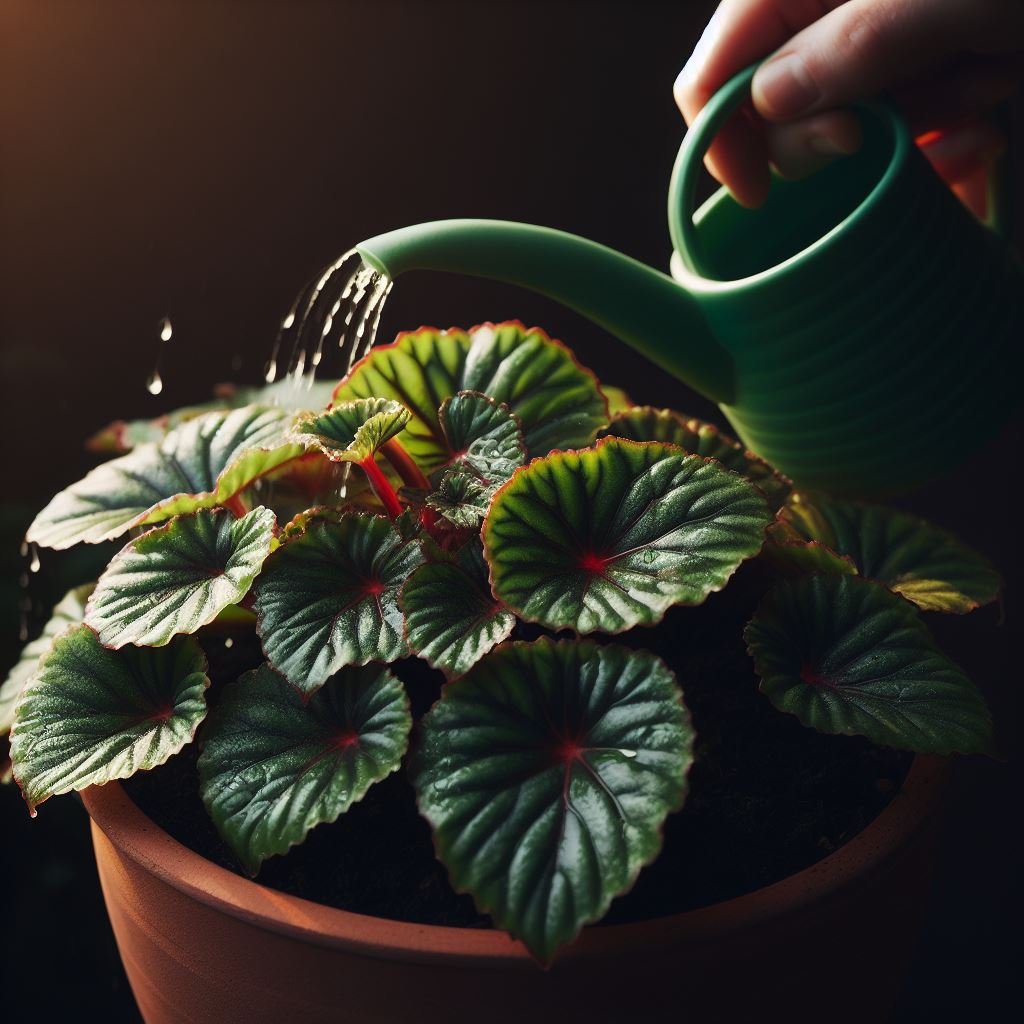
Moisture Management
Watering is a key aspect of Begonia Listada care, and striking the right balance is essential. Aim to keep the soil consistently moist but not waterlogged. Allow the top inch of soil to dry out between watering sessions to prevent overwatering, which can lead to root rot.
When watering, use room-temperature water and apply it directly to the soil, avoiding the leaves to prevent fungal issues. Adjust the frequency based on the plant’s growth stage and the surrounding humidity levels. During the dormant period or in cooler months, reduce watering to prevent waterlogged conditions.
Establishing a regular watering routine while being attentive to the plant’s specific needs will contribute to the overall well-being of your Begonia Listada.
Begonia Listada Humidity and Temperature
Creating the Ideal Microclimate
Begonia Listada, hailing from the tropical landscapes of South America, thrives in environments with moderate to high humidity levels. Achieving and maintaining the right humidity is crucial for the well-being and lush growth of this begonia species.
Humidity Requirements
- Moderate to High Humidity: Aim to keep the humidity levels around 50% to 80%. You can increase humidity by placing a humidifier nearby, using a humidity tray, or grouping plants together.
- Leaf Mistings: Regularly mist the leaves with room-temperature water, especially during dry periods or when the indoor air is exceptionally dry.
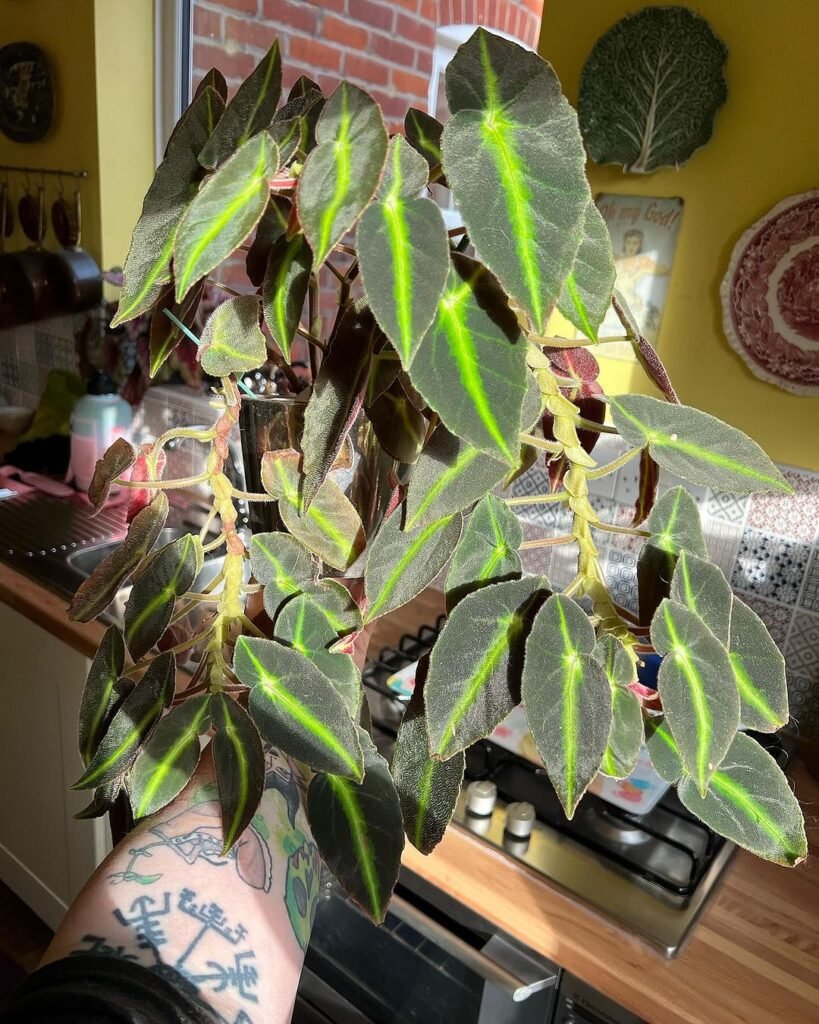
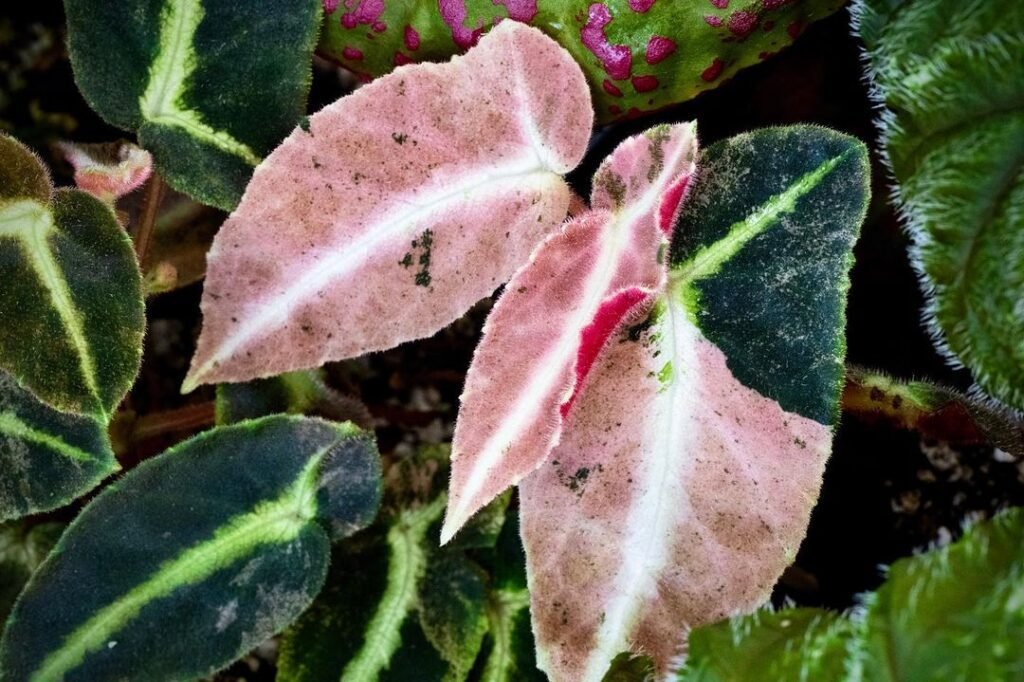

Temperature Considerations
Begonia Listada is accustomed to warm temperatures, reflecting its tropical origins. Providing a stable and moderate temperature range enhances its overall health and promotes vigorous growth.
Temperature Guidelines
- Ideal Range: Maintain temperatures between 60°F to 75°F (15°C to 24°C) year-round. Avoid exposing the plant to sudden temperature fluctuations or drafts.
- Protect from Cold Drafts: Begonia Listada is sensitive to cold drafts. Shield it from chilly air by placing it away from windows, doors, or other sources of drafts during colder months.
By paying attention to both humidity and temperature factors, you’ll create a microclimate that mimics the begonia’s natural habitat, fostering optimal growth and vitality.
Fertilizing Begonia Listada
Nourishing for Optimal Growth
Fertilizing is a crucial aspect of Begonia Listada care, providing the necessary nutrients for vibrant foliage and robust health. Understanding the right fertilizing routine and formulation is key to unlocking the full potential of your begonia.
Fertilizing Schedule
- Balanced Liquid Fertilizer: Feed your Begonia Listada with a balanced liquid fertilizer every 4-6 weeks during the growing season (spring and summer).
- Dilution Recommendations: Follow the manufacturer’s instructions for dilution, usually halving the recommended strength to prevent over-fertilization.
- Pause in Winter: Reduce or halt fertilization during the dormant period in winter when the plant’s growth naturally slows down.
Monitoring and Adjusting
Regularly monitor the plant’s response to fertilization. If you observe signs of over-fertilization, such as leaf burn or excessive foliage, reduce the frequency or dilute the fertilizer further.
Adjust the feeding schedule based on environmental conditions, as factors like temperature and light intensity influence the plant’s nutrient requirements. A well-fed Begonia Listada will reward you with vibrant, healthy foliage.
Begonia Listada Pruning and Shaping

Enhancing Aesthetic Appeal
Pruning is an essential aspect of Begonia Listada care, contributing to the plant’s overall shape, density, and aesthetic appeal. Knowing when and how to prune ensures a well-maintained and visually pleasing begonia.
Pruning Guidelines
- Remove Leggy Growth: Trim leggy or elongated stems to encourage a bushier, more compact form. This helps maintain an attractive and well-balanced appearance.
- Deadheading: Regularly remove spent flowers to redirect the plant’s energy into new growth and encourage continuous blooming.
- Yellowed Leaf Removal: Trim and remove yellowed or damaged leaves promptly to enhance the overall appearance and prevent potential disease spread.
Shaping Techniques
Begonia Listada responds well to shaping, allowing you to sculpt its form to your preference. Consider these shaping techniques:
- Topiary Style: Create a topiary effect by selectively pruning and shaping the foliage. This adds an artistic element to your plant’s presentation.
- Bushy Growth: Encourage a bushier growth habit by pruning back longer stems, especially if your Begonia Listada tends to become leggy.
- Balancing Act: Aim for a balanced and symmetrical shape, ensuring that the plant maintains a pleasing appearance from all angles.
Pruning not only contributes to the aesthetics of your Begonia Listada but also promotes better air circulation, reducing the risk of pests and diseases. Regular pruning sessions, coupled with shaping techniques, will result in a well-maintained and visually appealing begonia specimen.
Begonia Listada Propagation and Repotting
Propagating Your Begonia Listada
Propagation is an exciting aspect of Begonia Listada care, allowing you to multiply your plant and share its beauty with fellow gardening enthusiasts. Here’s a detailed guide on how to propagate Begonia Listada successfully.
Stem Cutting Propagation
- Select Healthy Stems: Choose healthy stems with at least two nodes. Nodes are points on the stem where leaves and roots grow.
- Cutting Preparation: Use a sharp, clean knife or scissors to cut a 4-6 inch stem section just below a node. Ensure the cutting has a node at its base and one or two leaves.
- Remove Lower Leaves: Trim the leaves on the lower half of the cutting, leaving only a couple of leaves at the top.
- Rooting Medium: Plant the cutting in a well-draining rooting medium, such as a mix of perlite and peat moss.
- Maintain Humidity: Cover the cutting with a plastic bag or place it in a humidity dome to maintain high humidity levels. This encourages root development.
- Root Development: After a few weeks, the cutting should develop roots. Once roots are established, transplant it into a larger pot with regular potting soil.
Repotting Guidelines
Repotting is essential for the long-term health of your Begonia Listada, providing fresh soil and ample space for growth. Follow these guidelines for successful repotting.
Timing for Repotting
- Annually for Young Plants: Repot young Begonia Listada plants annually to refresh the soil and provide more space for growth.
- Mature Plants Every 2-3 Years: Mature plants can be repotted every 2-3 years, or when you notice the plant becoming root-bound.
Repotting Process
- Choose the Right Time: Spring is generally the best time to repot Begonia Listada when it’s entering a period of active growth.
- Select a Larger Pot: Choose a pot that is 1-2 inches larger in diameter than the current one. Ensure it has drainage holes.
- Gentle Removal: Carefully remove the plant from its current pot, avoiding damage to the roots.
- Inspect Roots: Trim any dead or rotting roots. Healthy roots are typically white or light-colored.
- Add Fresh Soil: Place a layer of fresh potting mix in the new pot and position the plant. Fill the remaining space with soil, leaving about an inch from the rim.
- Watering After Repotting: Water the plant thoroughly after repotting to settle the soil and hydrate the roots.
By following these propagation and repotting guidelines, you’ll not only maintain the health of your existing Begonia Listada but also have the joy of cultivating new plants to share or expand your collection.
Begonia Listada Seasonal Care
Adapting to the Changing Seasons
Seasonal care is crucial to meet the evolving needs of your Begonia Listada throughout the year. Understanding how to adjust care practices during different seasons ensures the continued health and vitality of your begonia.
Spring and Summer Care
- Increased Watering: With the onset of the growing season, increase watering frequency. Keep the soil consistently moist, but avoid waterlogging.
- Fertilize Regularly: Feed your Begonia Listada with a balanced liquid fertilizer every 4-6 weeks to support active growth and flowering.
- Monitor Light Exposure: Ensure your plant receives bright, indirect light. Adjust its placement if needed to optimize light conditions.
- Encourage Pruning: Spring and summer are ideal for pruning and shaping. Trim leggy stems and remove spent flowers to maintain a compact and attractive form.
Fall and Winter Care
- Reduced Watering: During the dormant period in fall and winter, reduce watering. Allow the top inch of soil to dry out between waterings.
- Temperature Awareness: Protect your Begonia Listada from cold drafts, and maintain temperatures between 60°F to 75°F (15°C to 24°C).
- Limit Fertilization: Reduce or halt fertilization during the dormant phase, allowing the plant to naturally slow down its growth.
- Low-Light Tolerance: Begonia Listada can tolerate lower light levels during the winter months. However, ensure it still receives some filtered sunlight.
By tailoring your care routine to the changing seasons, you’ll provide your Begonia Listada with the conditions it needs to thrive year-round.
Begonia Listada Companion Plants
Creating Harmonious Plant Combinations
Choosing the right companion plants enhances the visual appeal of your Begonia Listada and creates a harmonious garden or indoor display. Consider these factors when selecting companions for your begonia.
Complementary Foliage
- Ferns: The delicate fronds of ferns provide a lovely contrast to the bold stripes of Begonia Listada.
- Hostas: Shade-tolerant hostas with their diverse foliage colors and textures complement the striking appearance of the begonia.
Similar Watering Needs
- Peace Lily (Spathiphyllum): With similar humidity preferences, the peace lily pairs well with Begonia Listada, creating a lush and vibrant display.
- Calathea: Known for its unique leaf patterns, calathea shares the begonia’s preference for consistently moist soil.
Container Combinations
- Pothos (Epipremnum aureum): Planted in the same container, trailing pothos vines provide an elegant cascading effect alongside the upright growth of Begonia Listada.
- Spider Plant (Chlorophytum comosum): The arching leaves of a spider plant complement the begonia’s vertical growth, adding dimension to your plant arrangement.
If you’re thinking of extending your begonia plant family, read up on begonia chlorosticta care and begonia solenia care to help you decide on the next addition to your squad.
Pest Control Tips for Begonia Listada
Identifying and Managing Common Pests
Pests can pose a threat to the well-being of your Begonia Listada, so proactive pest control is essential. Familiarize yourself with common pests that may affect your begonia and implement effective control strategies.
Common Pests for Begonia Listada
- Spider Mites: These tiny arachnids suck sap from leaves, causing stippling and discoloration.
- Aphids: Small, soft-bodied insects that feed on plant sap, often found on the undersides of leaves.
- Mealybugs: White, cotton-like insects that cluster on stems and leaf joints, sapping plant juices.
- Scale Insects: Hard or soft-shelled insects that attach to stems and leaves, draining plant fluids.
Pest Control Measures
- Neem Oil: Use neem oil, a natural and effective insecticide, to combat a variety of pests. Dilute according to the package instructions and apply to affected areas.
- Insecticidal Soap: A mild insecticidal soap solution can be sprayed on pests, disrupting their cell membranes and effectively controlling their population.
- Isolation: If you spot pests, consider isolating the affected Begonia Listada to prevent the infestation from spreading to other plants.
- Regular Inspection: Periodically inspect the leaves, stems, and undersides of leaves for early signs of pest infestations. Early detection allows for prompt and targeted control measures.
Implementing a combination of these pest control measures will help protect your Begonia Listada from common invaders and ensure its continued health and vitality.
Reviving a Sick or Wilting Begonia Listada
Diagnosing and Rehabilitating a Stressed Plant
A sick or wilting Begonia Listada can be distressing, but with proper diagnosis and care, you can often revive a struggling plant. Here’s a step-by-step guide to assess and nurse your begonia back to health.
Common Issues and Solutions
- Overwatering: If the soil is consistently waterlogged, allow it to dry out. Adjust your watering frequency to prevent future overwatering.
- Underwatering: Dry and crispy leaves indicate underwatering. Increase watering, and consider placing the pot in a humidity tray.
- Poor Drainage: Ensure the pot has drainage holes to prevent waterlogging. Repot in well-draining soil if necessary.
- Pest Infestation: If pests are present, follow the pest control tips mentioned earlier to eliminate them.
- Environmental Stress: Evaluate the plant’s surroundings. Ensure it’s not exposed to drafts, extreme temperatures, or sudden light changes.
Reviving Techniques
- Trimming and Pruning: Trim dead or yellowed leaves and prune leggy stems to encourage new growth.
- Repotting: If the root system is compromised, consider repotting the begonia in fresh soil.
- Humidity Boost: Increase humidity by misting the leaves or placing a humidity tray nearby.
- Gradual Acclimatization: If the plant has experienced environmental stress, gradually acclimate it to its ideal conditions to avoid shock.
With attentive care and targeted interventions, your Begonia Listada has the potential to bounce back and regain its vigor.
Conclusion
In conclusion, cultivating a thriving Begonia Listada involves a combination of attentive care, proper environmental conditions, and proactive management of potential challenges. Whether you’re a seasoned plant enthusiast or a beginner, the unique beauty of Begonia Listada makes it a rewarding addition to your indoor or outdoor plant collection.
Remember to provide the begonia with the right balance of light, humidity, and nutrients. Regularly monitor its growth, and be prepared to adjust care routines based on seasonal changes. With the proper care and attention, your Begonia Listada will reward you with its stunning foliage and charming presence.
FAQs
How often should I water my Begonia Listada?
Watering frequency for Begonia Listada depends on factors such as the season, humidity levels, and soil moisture. Keep the soil consistently moist, allowing the top inch to dry out between waterings. In winter or during dormancy, reduce watering to prevent waterlogged conditions.
Can Begonia Listada tolerate direct sunlight?
Begonia Listada prefers bright, indirect light and can tolerate lower light levels. However, avoid direct sunlight, as it can lead to leaf scorching. Filtered sunlight or partial shade is ideal for optimal growth.
How do I propagate Begonia Listada?
Begonia Listada can be propagated through stem cuttings. Select a healthy stem with at least two nodes, remove lower leaves, and plant the cutting in a well-draining rooting medium. Maintain high humidity during the rooting process, and transplant the cutting once roots are established.
What is the best fertilizer for Begonia Listada?
Use a balanced liquid fertilizer with a dilution recommended by the manufacturer. Feed your Begonia Listada every 4-6 weeks during the growing season (spring and summer). Reduce or halt fertilization during the dormant period in winter to allow the plant to naturally slow down its growth.

Writer/Green Thumb/Explorer – Rooted deep in the rich soils of Devon, I’ve cultivated a vast expertise in plant care, helping greenery thrive in homes across the UK. When I’m not crafting detailed plant care guides, I’m journeying through the lush landscapes of the West Country, unearthing nature’s secrets and sharing them with fellow plant enthusiasts. Every leaf has a story, and I’m here to tell it.





